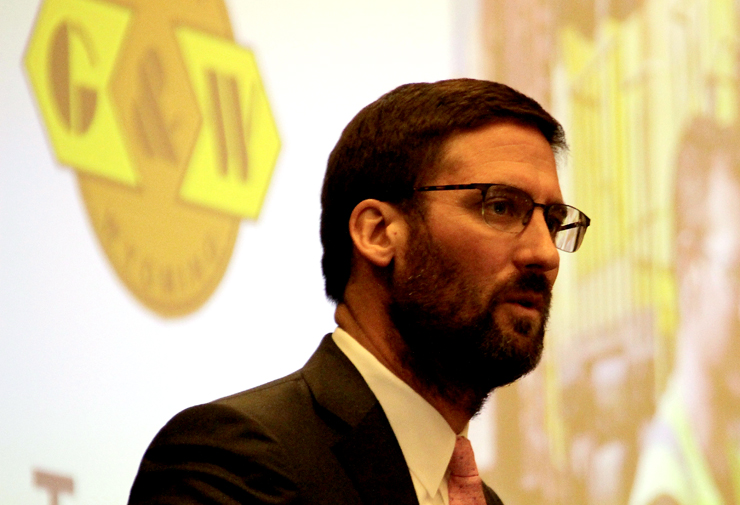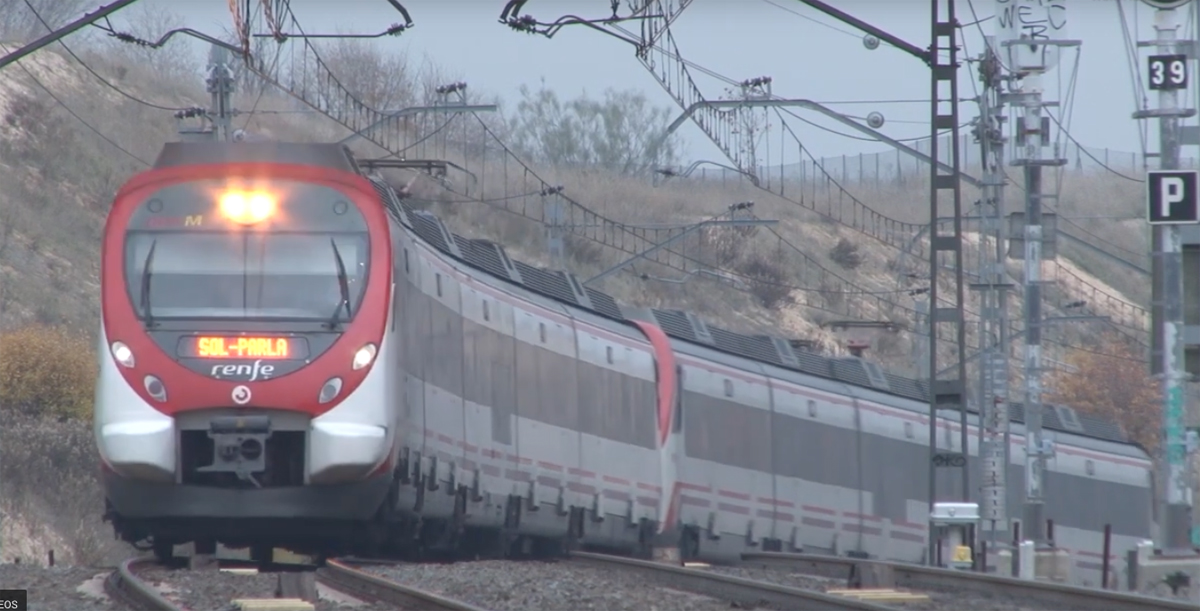Railroading’s most inescapable topic also reaches short lines, as Genesee & Wyoming chairman, president, and CEO John Hellman outlined during his Wednesday luncheon address to the Midwest Association of Rail Shippers and Traffic Club of Chicago at the MARS conference.
As Class I railroads adopt PSR, short lines feel its impact. And, Hellmann says, at least some of the concepts of the operating philosophy can be taken to short lines.
PSR at the Class I level often offers negatives to short lines, at least initially. During a transition period, it can mean receiving longer trains for interchange at unpredictable times.
“Our volumes are adversely affected,” he says, “and our costs are higher, because we aren’t able to prepare for trains when we don’t know when they’re going to show up.” Over time, though, he said, the company’s experience, most recently with CSX Transportation, is that “we become very efficient interline partners.
“The train plan gets balanced, the terminals get fluid, the service becomes reliable, and then we adjust our operations to match. So in theory, with the passage of time, we’ll get increased volume, with more reliable service, better network capacity, and we get our costs back down to where they belong.”
To mitigate the negatives for customers, he says, G&W properties can create blocks of traffic to a destination, provide additional switching, and — in some cases — create new storage-in-transit yards “when the PSR requirements aren’t supportive of the output from a given plant. Those cars can sit in storage on a G&W road, so we play a new role in the logistics chain.”
Meanwhile, as part of a program dubbed “Roots Reset,” brings some PSR concepts to its railroads, notably a focus on operating ratio and capital efficiency.
Growing out of a program that began in Canada, the program has now been rolled out at 40 of G&W’s 114 North American short lines, with the initial emphasis on introducing it to railroads connecting with CSX during its PSR transition. Thirty more railroads are scheduled to begin the program in 2019. Others will likely be added as PSR plans for connecting railroads become more defined.
“It’s simply a railroad-by-railroad process review by our local management. … We look at the customers, the Class I interchange frequency, the service plan, what assets we’re deploying, the organizational design, the financial performance, and we try to make it better,” Hellmann says. “It could be a new service plan once we know what the customer’s needs are as they relate to interchange with the Class I under PSR. We look to optimize the locomotive fleet, the labor resources, and we put a time frame on getting it all executed. … Most importantly, it’s continuously making adjustments based on the market, the customer needs, as well as how the Class Is are delivering at interchange.”
Hellmann says G&W was able to “unlock” about $16 million of operating income on those 40 railroads. “It might not sound like much if you put it in the context of a Class I railroad, but if you think about it from a shortline perspective, where we’re pretty lean and mean to begin with, I actually found it pretty exciting that we were able to get that much more out of our railroads.”
Hellman offered two examples: the 265-mile Kiamichi Railroad, a Class III operation in Oklahoma, Arkansas, and Texas, which runs between Madill, Okla., and Hope, Ark., and the 739-mile, Class II Rapid City, Pierre & Eastern, which primarily operates in South Dakota.
On the Kiamichi, G&W brought in new top managers, increased service from five to seven days, increased the locomotive roster by roughly a third with the purchase of six SD40s, and spent $35 million over five years on track upgrades. The result: a 20-percent increase in revenues, 12-percent drop in operating ratio, and 27-percent decrease in derailments. The Kiamichi was named BNSF Railway’s 2018 short line of the year.
On the RCP&E, purchased from Canadian Pacific in 2014, G&W began scheduled operations for about half of its 25 trains per week. With that, customers know what days they will receive service, and receive that service in a 90-minute window. The railroad also was able to get four to six additional crew starts with the same number of people. With the help of state and federal funding, the railroad has spent $80 million on upgrades, trimming running times by an hour by replacing rail; adding sidings to double line capacity; and increasing its car fleet by 2,000.
The changes have led to a 21 percent increase in revenue since 2015, along with a 27-percent decrease in the number of locomotives and 10 percent decrease in headcount since 2014. The operating ratio has dropped 12 points, from 73 to 61 percent.
“It’s truly a remarkable turnaround of that business,” Hellmann said. And more improvement is on tap.
“Because of nature of the operation, because of the investment in the plant, customers have gotten confident in the service they’ll be getting for the next 50 years.”
Two new plants are being built on line, with another facility reopening and a fourth being expanded. G&W projects an additional 20,000 carloads as a result.














Back to the future. There was a time when Class 1’s actually serviced line-side customers but those days are over for most clients. Ergo, the rise of the short-line with flexible labor, available equipment and a service-oriented culture to off-load the final mile costs the big boys want to avoid.
Mot knowing when the interchange is going to turn up does not sound like precision scheduled railroading. Seems any change is dubbed PSR, even if it has the opposite effect.
It seems with G&W they rely on growing their business to make money. Not like some of the Class Ones which think cutting is the way.